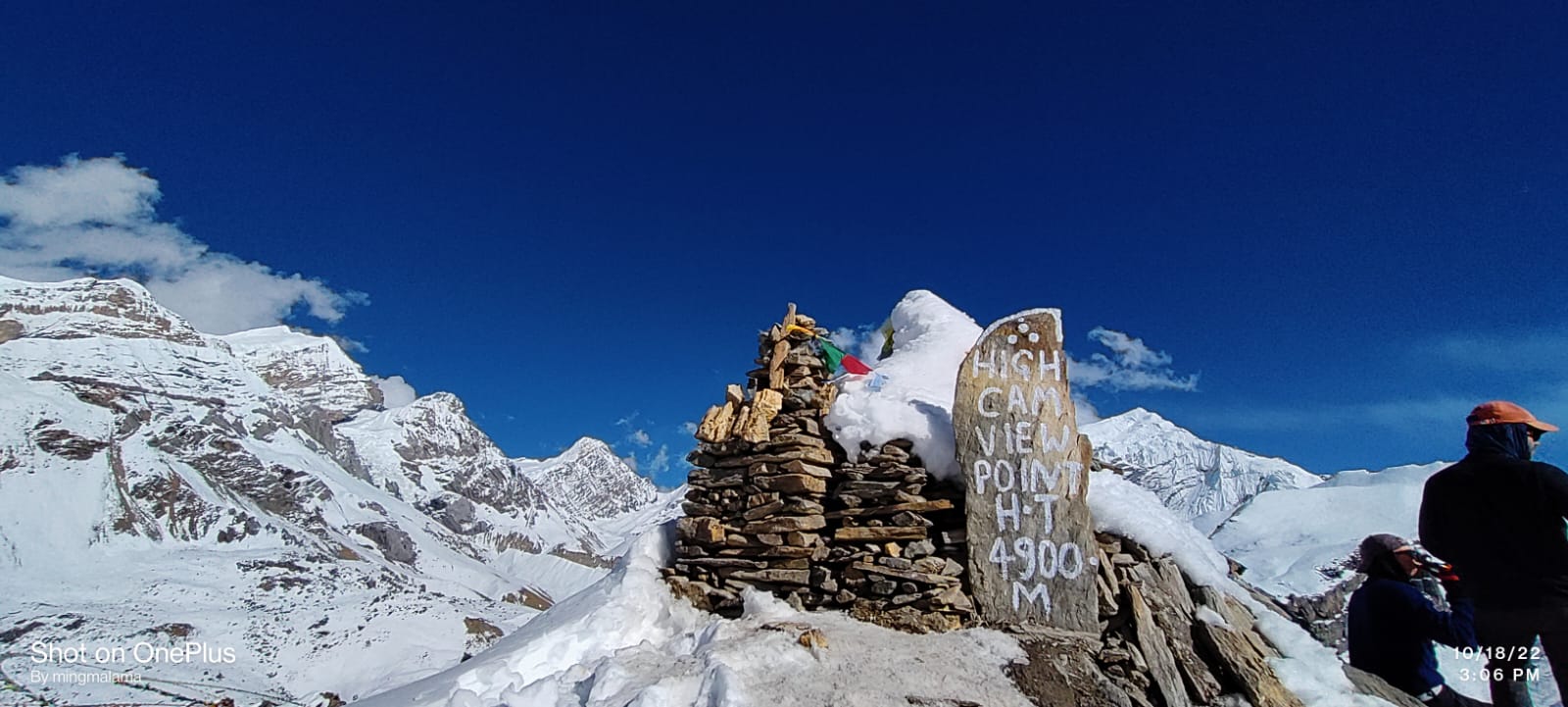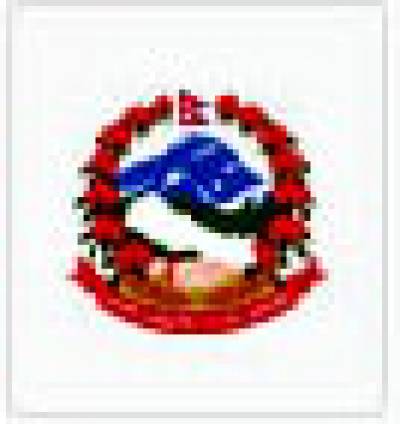ANNAPURNA CIRCUIT TREK 13 DAYS
This is an ideal trekking destination for nature lovers and for those who enjoy the wilderness! This trek takes you through the Annapurna Conservation Area and to the highest pass and the deepest valley in the world. Thorong La Pass (5,416m/17,769ft) and the Kali Gandaki Gorge (5,571m) are just two of the features of this amazing escape. This is the most popular trekking region in Nepal. The trails will take you through remarkable rhododendron, oak, bamboo and cyprus forests and you will be shocked at the closeness of these massive snow-covered peaks: Annapurna I, II, III, IV, Dhaulagiri (8167m) (meaning white beautiful mountain in Sanskrit), Machapuchare (Fish Tail), Annapurna South and Manaslu. You will also visit one of the highest lakes in the world, Tilicho Lake (4919m) and experience the typical cultures of the many villagers living in this remote region. A visit to the well-known Buddhist and Hindu holy site at Muktinath is a serene experience. It is claimed that there are over a 100 varieties of orchids in the area, as well as many animal species like the Martin deer, Langur monkey and the mysterious Snow Leopard.
Trekking through this region will expose you to the charming Sherpa people with their welcoming friendly smiles and who are also renowned for their stamina as high altitude climbers. They are respected worldwide among serious mountain climbers.
Your journey begins at Kathmandu with a full day of seeing the sights of Kathmandu Valley. The trek itself starts from Syange and takes you through the following villages: Tal (1710m), Danakyu (2190m), Chame (2,710m/8,891ft), Pisang (3,300m/10824ft), Manang (3,500m/11,482ft), Yak Kharka (4,110m/13,484ft), Thorong Phedi (4420m/14501ft), Thorong La Pass (5416m/17764ft), Muktinath (3,800/12,467ft), Tatopani and on to Pokhara (850m). The last part of this trek is a drive from Pokhara back to Kathmandu (1,350m). We will spend a day at Manang to better acclimatize and prepare ourselves before heading up to Thorong La Pass, the highest point on the trek.
Sherpa Expedition Team will take care of permits, meals and accommodation on the trek. Contact us to find out what makes this the most popular trekking region of Nepal.
ITINERARY
Day 1 : Drive from Kathmandu to Besisahar/ Syange (1136m) Duration: 7-8 hours.
We have a fairly long drive to where our trek begins. This is a good time to sit back and take in the sights of the changing countryside; rivers, terraced farmlands and views of the stunning Himalayan Mountains. Tonight we will stay at a guesthouse.
Day 2 : Trek from Syange to Tal (1710m) Duration: 5-6 hours.
Today we start out by crossing the river and then head up to a ridge where we follow the trail to Tal, the first village in the Manang region. Just before Tal we pass a waterfall. We will stay overnight at Tal.
Day 3 : Trek from Tal to Danakyu (2190m) Duration: 5-6 hours.
Today we trek along a broad flat valley and then climb a stone stairway to 1860 meters. The trail is then undulating until we reach Dharapani at 1890 meters. We then arrive at the Tibetan village of Danakyu with its characteristic flat stone roofed houses.
Day 4 : Trek from Danakyu to Chame (2670) Duration: 5-6 hours.
This morning we follow a rough and rocky trail and climb to Timang at 2750 meters and through a forest close to the river before coming to the village of Kopar at 2590 meters. Next we come to Chame, the headquarters of the Manang district from where we can see Annapurna II and two hot springs close to the village.
Day 5 : Trek from Chame to Pisang (3300m) Duration: 4-5 hours.
We walk through a steep and narrow valley from where we have our first views of Paungda Danda, a massive curved rock face soaring 1500 meters vertically up from the river bed. From here we can look up to the gigantic Annapurna II and Pisang Peak. We then head down to Manang Valley. Tonight we will stay at a guest house in Pisang.
Day 6 : Trek from Pisang to Manang (3540m) Duration: 6-7 hours.
Today we enter the upper Manang region that begins at Pisang. Today we head to Braga; a Tibetan village with its characteristic architecture and houses built one upon the other. One of the main features here is its Gompa (Tibetan Buddhist temple), the largest in the entire Manang region. Manang is also a popular place for trekkers and is a good place to acclimatize before heading to higher altitudes. We will stay here overnight.
Day 7 : Exploration & Acclimatization day at Manang.
Health care professionals recommend that before heading to higher altitudes trekkers acclimatize. They also strongly recommend that you stay active during this period. Today we will climb up to Mt. Khangsar (3756m) as a means of acclimatizing. We will stay the night at Manang.
Day 8 : Trek from Manang to Yak-kharka (4050m) Duration: 4-5 hours.
Today we have a 10.4 km ascent to Yak Kharka on a trail that passes through juniper forests. On the trail it is possible we will come across yak grazing in these high alpine pastures. We will also pass the only teahouse at Thorong Khola. Depending on the weather conditions and how energetic we feel we may decide to trek a little further and stay overnight at Letdar.
Day 9 : Trek from Yak Kharka to Phedi or High camp (4700m) Duration: 3-4 hours.
The trail initially descends and crosses the river at 4310 meters and then we have to climb up to Phedi at 4450 meters. At High Camp (4700m) there are several good guest houses where we can stay.
Day 10 : Cross Thorong La Pass (5,416m) & trek to Muktinath (3760m) Duration: 7-8 hours.
Today is one of the toughest days on the trek as we hike for up to 8 hours. The higher altitude also makes it more hard going with less oxygen and the possibility of very strong winds in these alpine regions. On the trail we may pass sheep, yaks and merchants transporting their goods on mules or on their backs. At Thorong La Pass we will have incredible views of Annapurna, Gangapurna and the distinct peak of Khatungkang (6484m). We then descend for around 1600 metres and along the trail can expect to have views of Dhaulagiri (Dhavali giri, meaning “White Mountain”), the highest mountain that is wholly within the borders of Nepal. The trail is less challenging as we head to Muktinath where we stay overnight.
Day 11 : Drive from Muktinath to Tatopani (1200m) Duration: 5-6 hours.
This morning we head downhill to the Kaligandaki River and then follow a road taking a jeep or bus to a bus to Tatopani where we will stay the night.
Day 12 : Drive from Tatopani to Pokhara (8,50m) Duration: 4-5 hours.
This morning we head to Pokhara in a private vehicle with a break for lunch along the way.
Day 13 : Drive from Pokhara to Kathmandu (1,350m) Duration: 6-7 hours.
On the last day of our journey, we head back to Kathmandu through the mountain passes and across rivers until we arrive at Kathmandu.
SERVICES
Cost Included In Your Package
- Kathmandu - Besisahar transfers on a local bus, Besisahar to Syange by Sharing Jeep Pokhara - Kathmandu transportation on a Tourist bus
- One night hotel accommodation in Pokhara with breakfast
- Jomsom To Tatopani- Pokhara transportation by Bus.
- Three Meals a day [Breakfast, Lunch, and Dinner] during the trek
- Accommodation on beautiful cozy tea houses as per the itinerary
- Annapurna Conservation Area Project (ACAP) entry permits and Trekkers Information Management System (TIMS) cards
- Experienced English-speaking, government licensed and ministry of tourism trained trekking guide with meals, accommodation, salary and insurance
- Strong experienced Sherpa helpers [porters] with meals, accommodation, salary, and insurance
- Assistant trekking guide for groups over 8 people with meals, accommodation, salary, and insurance
- Use of sleeping bag, down jacket, duffel bag and walking poles (if you don’t have your own, to be returned after trip completed).
- Comprehensive first aid medical kit carried by the guide / American medical association approved Oximeter
- Necessary paper works, all government, and local taxes, company service charges
- Trip achievement certificate after successful trip completion.
- Oxygen meter to check your pulse and oxygen saturation and heart rate twice daily (Very useful to check Altitude Mountain Sickness(AMS) symptoms) which will ensure your health during the trek.
Costs Exclude
- Meals whilst you are in Kathmandu & Pokhara - lunch, and dinner.
- Nepal entry visa fee (easy to obtain the visa on arrival at Tribhuvan International Airport – Kathmandu). $30 USD for 15-day, $50 USD for 30 Days, and $125 USD for 90 Days visa.
- Personal travel and medical insurance.
- Hotel accommodation In Kathmandu
- International airfare.
- Your personal expenses.
- All the alcoholic and nonalcoholic, soup, tea, coffee, hot chocolate, cocoa, mineral water, extra food, cold and hot drinks on trek ( i.e. those you choose to purchase along the way and during evenings in the tea houses)
- All desserts & sweet things like chocolate, cake, pie, pudding.
- Hot shower and battery charging at the tea houses.
- Tips for the guide, porter, and driver (tipping is expected)
EQUIPMENTS
The following information will give you some idea about what you need to bring for the trek. It is important you do not forget the essential items, as this will determine your comfort and safety on the trek. Equally important is that you do not burden yourself with unnecessary equipment on the trek.
General
- All season sleeping bag and down Jacket (we can provide if you need it, but has to be returned after the trek)
- Duffle bag ( Sherpa Expedition & Trekking provide duffle bag during the trek but has to be returned after the trek)
- A wind and waterproof thin layered jacket (a must-have for morning and evenings above 3,000m)
- Daypack
Upper Body- Head / Ears / Eyewear
- A pair of half gloves
- A warmer hat that covers the ears
- Sunglasses
- Neckwarmer
- Sunscreen (35 to 60 SPF)
- Headlamp and an extra set of batteries
Hands
- A pair of half gloves for walking poles(if you prefer)
- Warmer shell gloves and liner
Upper Body
- long sleeve t-shirts
- Thermal tops
- wool jacket or pullover
- Sports bras for women and girls
- Water and windproof shell jacket
Lower Body
- Thermal underwear (especially trousers)
- windproof and waterproof trousers
- warmer trousers
- Comfortable trekking pants
- Extra casual sport pants
Footwear
- A pair of good waterproof trekking boots
- Pair of sandals
- 4-5 pairs of woolen socks
- Sock liners
- Light shoes and sneakers
- First Aid Kits and Medicines
- Assorted adhesive bandages (fabric preferred)
- Blister treatment cream or similar
- Insect / anti-itch ointment
- Ibuprofen or other pain-relief medication
- Diamox (125mg to 250mg tablets for altitude sickness)
- Warps, splints, and wound coverings butterfly bandage
- Water purifying pills
(Note our company guide will carry the medicines and first aid kits during the trek. However, we recommend you bring your personal first-aid kit as well)
Miscellaneous - but must useful on the trek
- 4 passport size photos with original passport
- Water bottle & filter
- Flight details (please make a copy and leave one pic at our office in KTM because in case you want to change your flight date)
- Bathroom kit (conform, should be included toilet paper, plastic bags, hand wipes, towel, and soap, etc.)
Extra things
- Comfortable trekking poles
- Quality energy dry foods (up to you)
- Power bank and music players
- Camera (memory card, chargers, and extra batteries)
GOOD TO KNOW
Accommodation
You will be accommodated in 3-star hotels in Kathmandu. During the trek, we will be staying at lodges/ teahouses. You may find comfort and better quality teahouses - having attached bathroom at lower levels- until you reach higher elevations, where the accommodation is more basic with bare necessities.
Meals during the trek
In Kathmandu, your hotel includes breakfast, whereas all meals (breakfast, lunch, and dinner) will be provided during the trek. A staple food of the Manang & Mustang regions is potatoes, oats, buckwheat, Sherpa stew, and Tibetan bread. Sherpa’s’ started farming potatoes when the first seeds were introduced to the region in the early 90s. There is a limited choice of food at higher elevations and except many potato dishes. Potatoes are high in carbohydrates – an excellent source of energy needed at high altitudes.
Transportation
We use a private car for sightseeing and for the airport to hotel pick and drop off. We use public transportation or local buses during the trek.
Physical fitness
This can be a challenging trek where you often have to walk 6-7 hours a day. You need past experience of hiking or trekking but if you have done any kind of trekking activities then it is always a plus! We have met people from all walks of life, shapes, and sizes who have completed the trek. The only difficult part is when altitude sickness strikes and the effect that it can have on your body. Before leaving for Nepal it is good if you can prepare yourself physically by increasing your stamina and oxygen intake.
Remember – The better prepared – the more enjoyable your trek!
MAP
PHOTOS/Videos
Departures
Select a departure month
Fill out the form below and a Travel Expert will reach out to create your perfect tour.
FAQS
What is the Annapurna Circuit Trek?
The Annapurna Circuit Trek is a popular trekking route in Nepal that takes you around the Annapurna massif, offering stunning views of the Himalayas, diverse landscapes, and rich cultural experiences. It is known for its challenging mountain passes and varied terrain.
How long is the Annapurna Circuit Trek?
The duration of the Annapurna Circuit Trek can vary depending on the specific itinerary and trekking agency. Typically, it takes around 8-20 days to complete the full circuit. This includes the trekking days and acclimatization/rest days.
What is the best time to do the Annapurna Circuit Trek?
The best time to do the Annapurna Circuit Trek is during the spring (March to May) and autumn (September to November) seasons. These months offer pleasant weather, clear skies, and favorable trekking conditions. However, the trek can be done throughout the year, with the exception of the monsoon season (June to August) when the trail can be muddy and prone to landslides.
Do I need a permit for the Annapurna Circuit Trek?
Yes, you will need a TIMS (Trekkers' Information Management System) card and an Annapurna Conservation Area Permit (ACAP) to do the Annapurna Circuit Trek. These permits can be obtained in Kathmandu or Pokhara.
What is the difficulty level of the Annapurna Circuit Trek?
The Annapurna Circuit Trek is considered to be a moderately to strenuously challenging trek. It involves long days of walking, crossing high mountain passes, and navigating varied terrain. A good level of fitness and prior trekking experience are recommended.
What is the maximum altitude reached during the Annapurna Circuit Trek?
The highest point on the Annapurna Circuit Trek is Thorong La Pass, which stands at an elevation of 5,416 meters (17,769 feet). This is a challenging and physically demanding part of the trek.
What are the accommodation and food options during the trek?
Accommodation during the Annapurna Circuit Trek is usually in basic teahouses or lodges along the trail. These provide simple rooms with shared facilities. As for food, you can expect to find a variety of Nepali and international dishes, including dal bhat (rice and lentil soup), momo (dumplings), and noodles.
Is a guide necessary for the Annapurna Circuit Trek?
While it is not mandatory to hire a guide for the Annapurna Circuit Trek, it is highly recommended, especially if you are not familiar with the area or have limited trekking experience. A guide can provide valuable insights, help with navigation, and ensure your safety throughout the trek.
What should I pack for the Annapurna Circuit Trek?
Some essential items to pack for the Annapurna Circuit Trek include sturdy trekking shoes, warm clothing, a good-quality backpack, a sleeping bag, a water bottle, a hat, sunscreen, insect repellent, and a first aid kit.
Can I combine the Annapurna Circuit Trek with other treks in the region?
Yes, it is possible to combine the Annapurna Circuit Trek with other treks in the Annapurna region, such as the Annapurna Base Camp Trek or the Tilicho Lake Trek. This allows you to customize your trekking experience and explore more of the stunning landscapes and cultural diversity of the area.
Latest Traveller’s Reviews
Travel experiences of our clients who recently returned from their trips.
100%
Based On 14 Reviews
Victoria Rowland
Australia
October 23, 2024
A Journey Beyond Expectations
I embarked on the Annapurna Circuit trek with Sherpa Expedition & Trekking, and it exceeded all my expectations. The professionalism of the staff was evident from the start. Our guide was not only skilled but also friendly, making the trek enjoyable and educational. The landscapes were jaw-dropping, with diverse terrain and charming villages. Every day brought new wonders, and the support from the Sherpa team made all the difference. I can’t wait to return for another adventure!
Peter Johansson
United States
October 8, 2024
Safe and Supportive Team
I felt safe and supported throughout the Annapurna Circuit trek with Sherpa Expedition & Trekking. The team was always attentive, checking in on our well-being and adjusting the itinerary as needed. Our guide had a wealth of knowledge about the region and was more than happy to share. The trek itself was challenging but incredibly rewarding, with awe-inspiring views at every turn. I highly recommend this company for anyone looking for a well-organized and enjoyable trekking experience.
Ngagne Diambang
Switzerland
September 17, 2024
Memorable Cultural Insights
The Annapurna Circuit with Sherpa Expedition & Trekking was not just about the stunning mountains; it was also a deep dive into Nepali culture. Our guide enriched our experience with stories and traditions from the local communities we visited. Each village offered a unique glimpse into the lives of the people, making the trek even more meaningful. The organization was top-notch, and every detail was handled with care. I left with unforgettable memories and a deeper appreciation for this beautiful country.
People Considering This Package Right Now Check availability






















